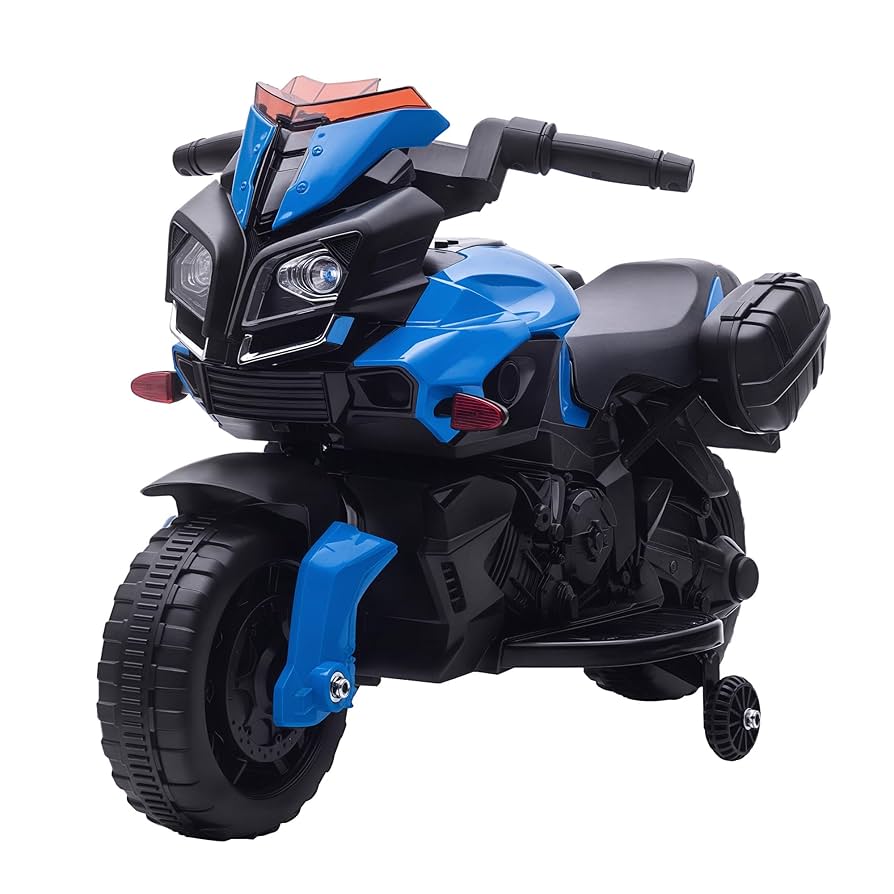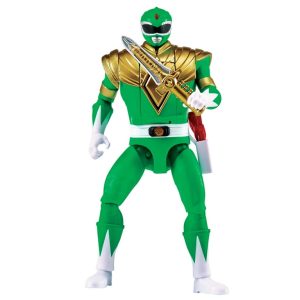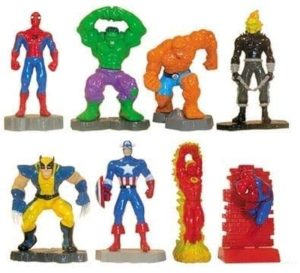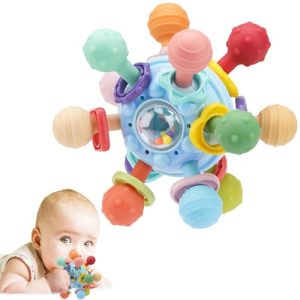Looking for the perfect way to introduce your child to the thrill of riding? A ride on toy motorcycle with training wheels might be just what you need.
It offers your little one the excitement of a real motorcycle but with the safety and support they need to learn confidently. Imagine the joy on your child’s face as they master their balance and build their skills—while you watch knowing they’re secure.
You’ll discover why these toys are a smart choice and how to pick the best one for your family. Keep reading to find out how you can turn playtime into a fun, safe learning experience your child will love.
Choosing The Right Toy Motorcycle
Picking the right ride on toy motorcycle with training wheels is important for your child’s fun and safety. The right choice helps your child learn balance and coordination. You should think about their age, size, and the bike’s features.
This guide will help you find the best toy motorcycle. We will look at age and size, materials, and safety features.
Age And Size Considerations
Choose a motorcycle that fits your child’s age and height. A bike that is too big or small can make riding hard and unsafe. Most toy motorcycles list the ideal age range on the box.
- Check the recommended age on the product label.
- Make sure your child can reach the ground with their feet.
- Look for adjustable seats to grow with your child.
- Consider the weight of the motorcycle for easy handling.
Material And Build Quality
Good materials make the motorcycle last longer and stay safe. Look for strong plastic or metal frames. The wheels should be durable and smooth to roll.
| Material | Benefit |
| High-density plastic | Lightweight and weather resistant |
| Metal frame | Strong and long-lasting |
| Rubber wheels | Good grip and smooth ride |
| Foam wheels | Quiet and soft on floors |
Safety Features To Look For
Safety is the top priority. Training wheels add balance and reduce falls. Check for easy-to-use brakes and stable design. Padding on handlebars and seats can protect your child.
- Training wheels for extra balance
- Non-slip footrests
- Adjustable brakes for small hands
- Soft grips on handlebars
- Rounded edges to prevent injuries
Benefits Of Training Wheels
Ride on toy motorcycles with training wheels help children learn to ride safely. Training wheels give extra support to young riders.
These wheels make riding easier and more fun. They help kids gain skills step by step.
Enhancing Balance And Confidence
Training wheels help children keep their balance while riding. This support helps them feel more sure of themselves.
As kids practice, they build confidence to try riding without extra help. This boosts their willingness to learn.
Preventing Falls And Injuries
Training wheels reduce the chance of falling off the toy motorcycle. They keep the bike steady on uneven surfaces.
This support lowers the risk of injuries and makes parents feel safe letting kids ride. Children can enjoy riding without fear.
Easing The Learning Process
Training wheels make it easier for children to learn how to ride. They give time to practice steering and pedaling.
- Allow safe practice of turning
- Help kids get used to controlling speed
- Make it simple to stop and start
Setting Up The Motorcycle
Setting up a ride on toy motorcycle with training wheels is important for safety. Proper setup helps children learn to ride with confidence.
This guide explains how to attach training wheels, adjust the seat and handlebars, and check tire pressure and stability.
Attaching Training Wheels Properly
Attach the training wheels firmly to the rear axle. Use the bolts and nuts provided in the kit. Make sure both wheels touch the ground evenly.
Check that the training wheels are tight and do not wobble. Loose wheels can cause accidents or make riding hard.
- Place training wheels parallel to the rear wheel
- Tighten bolts securely with a wrench
- Ensure both wheels touch the ground equally
- Test stability before letting your child ride
Adjusting Seat And Handlebar Height
Set the seat height so your child’s feet can touch the ground comfortably. This helps them balance and stop safely.
Adjust the handlebar height to a comfortable level. The child should hold the handles without stretching or bending too much.
- Loosen the seat clamp and slide the seat up or down
- Make sure seat is locked in place
- Adjust handlebar height by loosening its clamp
- Check that grips are easy to reach
Checking Tire Pressure And Stability
Check the tire pressure if the motorcycle has inflatable tires. Proper pressure keeps the ride smooth and safe.
Make sure the motorcycle stands stable on flat ground. Check all wheels for firmness and balance to prevent tipping.
- Use a tire gauge to check pressure
- Inflate tires to the recommended level
- Ensure training wheels and rear wheel are stable
- Test the motorcycle on flat surface before use
Safety Gear Essentials
Riding a toy motorcycle is exciting for kids. Safety is the top priority. Proper gear can help prevent injuries.
Let’s explore essential gear like helmets, pads, gloves, and footwear. Each plays a crucial role in keeping kids safe.
Helmet Selection And Fit
A well-fitted helmet is crucial. It protects the child’s head during falls or accidents.
- Choose a helmet that meets safety standards.
- Ensure the helmet fits snugly without being too tight.
- Adjust the chin strap for a secure fit.
Protective Pads And Gloves
Pads and gloves offer extra protection. They shield the knees, elbows, and hands from scrapes and bruises.
| Gear | Protection Area |
| Knee Pads | Knees |
| Elbow Pads | Elbows |
| Gloves | Hands |
Proper Footwear For Riding
Wearing the right shoes is important. They provide grip and support while riding.
Teaching Kids To Ride
Teaching kids to ride a toy motorcycle with training wheels is a great way to build their confidence. It helps them learn balance and control in a safe setting.
Using training wheels allows children to focus on steering and speed without the worry of falling. This makes the learning process fun and stress-free.
Starting With Basic Controls
Begin by showing your child how to use the basic controls of the toy motorcycle. Point out the throttle, brakes, and steering handle clearly.
Let your child practice these controls while the motorcycle is still. This helps them get comfortable before moving forward.
- Explain how to turn the handlebars left and right
- Show how to gently press the throttle for speed
- Teach how to use the brakes to stop safely
Guided Practice Sessions
Spend time riding together in a safe, open area. Walk or run alongside your child to help guide the motorcycle.
Offer gentle corrections and praise to boost their confidence. Let them try controlling the bike on their own little by little.
- Choose a flat, smooth surface for practice
- Stay close to support and prevent falls
- Encourage short rides to build stamina
Encouraging Patience And Persistence
Learning to ride takes time. Remind your child that it is okay to make mistakes and keep trying.
Celebrate small successes and encourage them to practice regularly. Patience helps children develop skills at their own pace.
- Give positive feedback for effort, not just success
- Set short practice times to avoid frustration
- Show your own patience and calm during practice
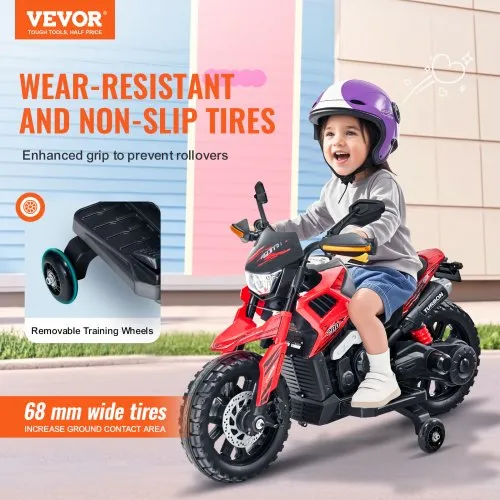
Credit: www.vevor.ca
Maintenance Tips
Keeping a ride-on toy motorcycle with training wheels in good shape is important. Regular care helps it last longer and stay safe for children.
This guide gives simple tips to maintain the toy motorcycle. Follow these steps to keep it working well.
Regular Cleaning And Inspection
Clean the toy motorcycle often to remove dirt and dust. Use a soft cloth and mild soap with water. Avoid harsh chemicals that can damage parts.
Check the motorcycle for cracks, loose pieces, or damage. Look at the wheels, handlebars, and training wheels carefully. Early detection helps fix problems fast.
Tightening Bolts And Screws
Bolts and screws can loosen with use. Check them regularly to keep the motorcycle safe and stable. Use the correct tools to tighten each fastener.
Do not over-tighten bolts or screws. Tighten them just enough to hold parts firmly without stripping the threads or cracking plastic.
Replacing Worn Parts
Parts like wheels, pedals, or grips may wear out over time. Replace them quickly to keep the motorcycle safe to ride. Use parts made for the specific model.
Keep spare parts on hand if possible. Regular replacement prevents accidents and keeps the toy working like new.
Transitioning From Training Wheels
Riding a toy motorcycle with training wheels is fun for kids. It helps them learn balance and coordination. Transitioning from training wheels is a big step in their riding journey.
This guide will help you know when your child is ready. It also covers how to remove the training wheels gradually and build advanced riding skills.
Signs Your Child Is Ready
Children show certain signs when they are ready to ride without training wheels. Recognizing these signs can make the transition smoother and safer.
- Your child can balance well while riding.
- They show confidence and interest in riding.
- They can start and stop the motorcycle easily.
Gradual Removal Process
Removing training wheels should be done gradually. This helps your child adapt to the new balance requirements.
Start by loosening the wheels to allow some wobble. Next, remove one wheel to help your child adjust. Finally, remove both wheels when they feel ready.
Building Advanced Riding Skills
Once your child rides without training wheels, it’s time to build advanced skills. These skills help improve their confidence and safety.
- Practice turning and maneuvering in open spaces.
- Teach them to look ahead while riding.
- Encourage riding on different surfaces.
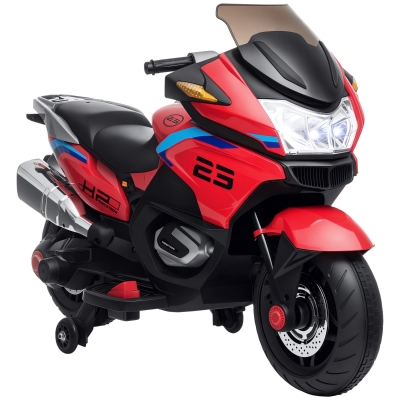
Credit: www.aosom.com
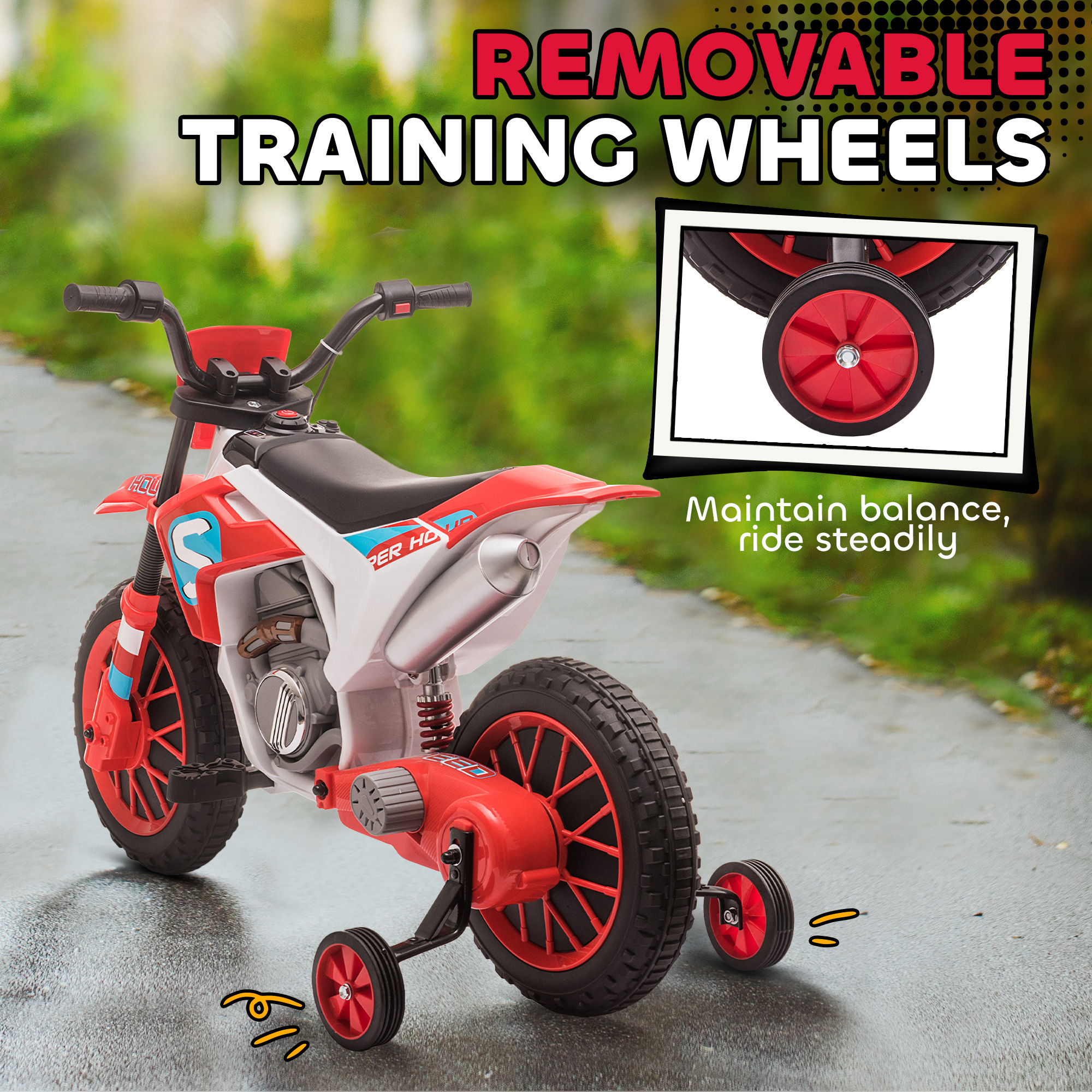
Credit: www.aosom.ca
Frequently Asked Questions
What Age Is Suitable For Ride On Toy Motorcycles?
Ride on toy motorcycles with training wheels are ideal for children aged 2 to 5 years. This age range ensures they develop balance and coordination safely while enjoying the fun.
Are Training Wheels Necessary For Beginners?
Yes, training wheels provide extra stability and confidence for beginners. They help kids learn balance without the risk of falling, making the learning process safer and more enjoyable.
How Do Training Wheels Improve Riding Skills?
Training wheels help children practice steering and speed control. They gradually build balance and muscle strength, preparing kids for riding without support later on.
What Safety Features Should I Look For In A Toy Motorcycle?
Look for sturdy construction, non-slip footrests, and secure training wheels. Also, check for smooth edges and reliable brakes to ensure your child’s safety during rides.
Conclusion
Ride on toy motorcycles with training wheels help kids learn balance. They offer safety and fun at the same time. Children gain confidence while they play outside. Parents enjoy watching their kids explore new skills. These toys make learning to ride easier and safer.
A simple way to start a child’s riding journey. Great for developing coordination and motor skills early. Choose a sturdy, well-made model for best results. Kids will love the feeling of independence it brings. A small step toward bigger adventures on two wheels.

